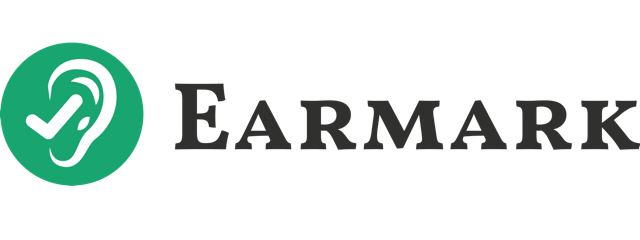Managing sales tax is one of the most challenging services to offer clients as an accounting firm.
Collecting sales information and filing tax returns traditionally involves a lot of work. It means logging in to multiple state portals, keying in sales data, and filing returns one at a time. With multiple clients filing in multiple jurisdictions each month, this quickly becomes unmanageable.
There’s also a big risk of making mistakes—if you slip up in one small way, it can lead to extensive notice correspondence and mounting penalties.
During an Earmark Expo webinar, hosts Blake Oliver and David Leary explored how modern compliance platforms such as Avalara’s Managed Returns for Accountants (MRA) allow you to expand your services without substantially increasing staff, risk, or costs.
Introducing a New Approach with Avalara
Avalara’s solutions aim to eliminate much of the repetitive manual work by consolidating data and automating return filings. John Sallese, Director of Strategic Accountant Solutions & Partnerships from Avalara showcased how Managed Returns for Accountants offloads the filing burden onto Avalara after the firm has reconciled the data.
Here’s how it works:
- Data Collection and Review: Firms import or sync sales data from QuickBooks, Shopify, Amazon, or other systems into Avalara. The platform can also recalculate sales tax liability if needed.
- Approval by the Firm: After confirming the monthly numbers are correct, the firm marks each return “Approved to File.”
- Automated Filing and Payment: Once approved, Avalara files and remits payment on time, assuming responsibility for meeting deadlines, sending confirmations, and handling notices.
John noted that if the firm misses the approval deadline—usually around the 10th of each month—Avalara auto-approves to avoid late filings.
As an added safeguard, if any Avalara-caused delay results in penalties or interest, Avalara covers those costs under the terms of service.
Two Distinct Service Models: MRA vs. Returns for Accountants
Avalara offers two different models for accounting professionals:
- Managed Returns for Accountants (MRA)
- Firm’s Role: Gather and reconcile monthly data, approve liabilities.
- Avalara’s Role: File returns, handle payments, and manage notices.
- Key Benefit: Reduced risk for late filings and penalties, as Avalara takes over once data is approved.
- Typical Cost: Ranges around $25–$30 per filed return (volume discounts may apply).
- Avalara Returns for Accountants (sometimes referred to as “ARA”)
- Firm’s Role: Owns the full process—import data, finalize calculations, file, pay, and manage notices.
- Avalara’s Role: Provides the software platform, automation tools, and supports advanced e-filing flows.
- Key Benefit: Complete control and flexibility over the entire return process.
- Typical Cost: Generally lower per return because the firm does more of the work.
Many firms adopt both solutions.
Straightforward filings can go on the MRA model, where the firm approves data and lets Avalara handle the rest.
Complex cases, such as back-filing multiple years, voluntary disclosures, or clients with inconsistent monthly data, might be better served with the RA model, which grants the firm end-to-end control.
Notice Management and Advisory Opportunities
In addition to filing returns, MRA includes comprehensive notice management. This means Avalara addresses notices from tax authorities and resolves them directly, relieving firms of much of the back-and-forth associated with sales tax inquiries.
Firms also gain better visibility into potential advisory projects. “You’re not just filing returns,” John emphasized. “If you see clients calculating tax in states where they’re not registered, you can help them register or do a voluntary disclosure.”
Using these platforms can elevate the firm’s role from simple compliance processing to a strategic advisor, offering value-added services around taxability research, nexus studies, registrations, and more.
Implementation Considerations
John shared what to consider when you’re implementing Avalara MRA:
- Data Integration: Ensure you can connect client systems (eCommerce, accounting, POS) to flow data automatically. This reduces manual entry and ensures more accurate filings.
- Monthly Workflow: Clearly define who imports data, who reviews it, and when approval is due. MRA’s auto-approval protects against accidental late filing.
- Client Onboarding: When setting up each client’s “filing calendar,” you’ll specify which returns need filing, the frequency, and any special state requirements. Avalara’s team verifies each setup to confirm accuracy.
- Pricing Your Services: Whether you pass the per-return fees directly to clients or bundle them into a flat monthly charge, clarify the difference between MRA’s delegated model and RA’s self-service approach.
Elevate Your Sales Tax Practice
Sales tax compliance no longer has to be a necessary evil fraught with manual effort and risk. By choosing the right workflow model—either delegating filings to Avalara (MRA) or keeping them in-house (RA)—firms can scale sales tax services while maintaining appropriate oversight. The key is matching each client’s needs to the best approach.
Want to See a Live Demo?
Catch the full Earmark Expo session featuring Avalara, hosted by Blake Oliver and David Leary. You’ll see a real-time walkthrough of the platform and learn how to seamlessly integrate advanced compliance solutions into your firm’s existing workflow.
Earn Free CPE
Visit earmark.app to watch the webinar and earn free NASBA-approved continuing professional education credit.
